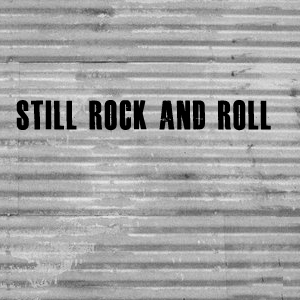The Cost of Redemption
9 min readAnti-gang activist, community leader, Nobel Peace Prize nominee, Presidential Award for Service honoree, literary award recipient… gang founder, convicted murderer, condemned man. All of these words described a man named Stanley Tookie Williams. From outward appearances, Stanley Williams seemed to be a test in contradiction, yet his life and death have sparked a nation-wide debate about our justice system and its means of punishment. Williams spent over half his life on death row in California’s San Quentin State Prison. If asked to describe his time in prison, the life that led him there, and who he is since arriving in prison, Williams would have undoubtedly uttered the word “redemption.”
Stanley Tookie Williams, whose real middle name is “Tookie,” was born to a poor, single mother in New Orleans during the winter of 1953. The situation into which he was born was less than ideal, and his mother, desiring a better life for her son, decided to uproot them both and head west. Landing in Los Angeles, California in 1956, both Tookie and his mother found the environment in L.A. to be not much different than their life back in New Orleans. Little did Ms. Williams know that this move would eventually lead her son to prison and ignite a segment of the United States to engage the common notion that incarceration is for punishment rather than rehabilitation.
As a seventeen year-old high school student in 1979, Tookie found the situation in his community to be one of gang violence and mayhem. An individual needed to develop a reputation of strength or be trampled upon by the local “gangs.” Seeing this problem that faced him and his friends, Tookie decided it was essential to do something in order to protect his neighborhood. Describing this beginning, Williams said, “we started out – at least my intent was to, in a sense, address all of the so-called neighboring gangs in the area, and to put, in a sense – I thought I can cleanse the neighborhood of all these, you know, marauding gangs. But I was totally wrong. And eventually, we morphed into the monster we were addressing.”
With this altruistic motive, Tookie found a fellow compatriot who shared his desire to cleanse the streets. These two, Tookie and Raymond Washington, began what would later become the Crips street gang. This “monster” called the Crips became a national, and even international, problem that many communities continue to battle to this day. For Williams, like many other young, black men, the gang provided him with a surrogate family and an opportunity to lead other men who found themselves struggling with the same societal ills.
He describes his reasons for his gang involvement, which most likely echo the reasons of countless other young men who find themselves in similar situations, by saying the following:
“I believe the center of the problem is self-hate, which is a very destructive mechanism that people pick up, because of the conditions not only of society but the morbid mindset of how they look at things. I believe that this is the motivating factor of gangs. It was to me. That’s why I had no qualms about initiating aggression toward people who looked like me – in other words, toward black folks. It was a sense of trying to erase or obliterate that which reminded me of myself…”
This self-hatred, of which Williams speaks, is what led him down the road of gang life, and he has become the quintessential example of a true gangster. This gangster mentality, fed by his continual desire to be the strongest and baddest that ever lived, culminated in the wintry months of February and March in 1979. During this time period, Williams was convicted of murdering four people in two separate robberies. His first victim, shot execution style, was Albert Owens. Owens, a convenience store clerk at the local 7-11 in Pico Rivera, California and father of two, was working the late shift. Entering the store with a shotgun, Williams and a companion ordered the clerk into a back room and shot him twice in the back. Williams and his accomplice made off with somewhere between $60 to $122, and left Owens to die. Twelve days later, Williams and another companion entered the Brookhaven motel and proceeded to shoot and kill Tsai-Shen Yang; her husband, Yen-Yi Yang; and their daughter, Ye-Chen Lin. The motive behind this crime was robbery – a robbery which netted Williams and his accomplice between $50 and $100.
When brought to trial, Williams sat before an all white jury who heard round after round of circumstantial evidence and the testimony of informants, many of which faced similar charges as Williams, and thus had nothing to lose from testifying against him. Williams was prosecuted by Robert Martin, who found various reasons to dismiss the three African-Americans from the jury pool, and compared Williams to a “Bengal tiger in captivity in a zoo.” Also, in the course of the trial, Martin asked the jurors to imagine Williams in his “natural habitat,” which he described as something comparable to the “back country.” In two previous cases, Martin was reprimanded for using race as a criterion for serving on a jury and had two murder convictions overturned due to his tactics. At the conclusion of the trial, Williams was found guilty of all four murders and sentenced to death.
Upon entering prison, Williams continued to foster the gangster bravado that led him there and, as a result, racked up numerous violent infractions. It is believed that he continued to run the Crips while behind bars and carried out various actions against rival gang members. It was one such infraction in which Williams was stabbed by another prisoner that led to him being placed in administrative solitary confinement for six and a half years. During this time, Williams had the opportunity to begin to examine his life and the lifestyle that resulted in his imprisonment, and subsequently, his death.
His “redemption” process, as he would call it, began within the walls of a tiny cell in San Quentin. Williams describes it in this way: “And once I was in solitary confinement, it provided me with the isolated moments to reflect on my past and to dwell upon something greater, something better than involving myself in thuggery and criminality. It had to be more to life than that. It had to be more than the madness that was disseminating throughout this entire prison.”
When asked what exactly made him decide to redirect his life and dedicate himself to a better path, Williams answers, “I believe it was education that helped me to change. It was through education that I was able to create common sense and use reasoning. And it was through this that I developed a conscience that led to my redemption.”
Now many have asked the obvious question, “Did he really change?” One need only to look so far as the actions Stanley Williams took after this “redemption” process began. After being released from solitary confinement, Williams went twelve years without any disciplinary infractions and fought to change the image of what he once was. As one of his first acts of redemption, Tookie officially renounced his gang affiliation and offered a written apology for his past actions in which he said, “So today I apologize to you all – the children of America and South Africa – who must cope every day with dangerous street gangs. I no longer participate in the so-called gangster lifestyle, and I deeply regret that I ever did.”
Tookie made the decision to reach out to those who have followed the same path he did, and transformed himself into a prolific author and anti-gang activist. After developing a relationship with one-time journalist Barbara Becnel, Williams decided to dedicate the rest of his years, however few, to preventing young people from following the same destructive path that leads to only two places: death or imprisonment. With Ms. Becnel’s help, Tookie began to author children’s books, whose intention was to educate kids on gangs and prevent them from being sucked into the despair that is gang life. In one of them, he writes to the children, “Don’t join a gang. You won’t find what you’re looking for. All you will find is trouble, pain and sadness. I know. I did.”
Williams made it his life’s goal to stop the gang violence that has so overtaken city streets here and abroad. In 2004, he helped broker a peace deal plan between the Bloods and the Crips, who were warring, both in California and New Jersey through “Tookie’s Protocol for Peace.” Through this “Protocol for Peace,” there is no doubt that thousands of young people’s lives have been sparred the dreadful consequences of gang life. Williams’ redemption was even made into a TV movie, entitled Redemption, in which Jamie Foxx vividly portrays his life-changing story.
Whether you believed Stanley Williams to be guilty or not (Williams maintained his innocence until his death, as he did at trial), it is hard to deny the radical change that occurred within the heart of this once ruthless leader of one of the most destructive forces within youth culture. As a result of this redemption story, our judicial system and its purpose have come under extreme scrutiny. Do we send those convicted of violent crimes to prison simply to punish them and lock them off from the rest of society? Or is it our desire that they be afforded the opportunity to change, and redeem what is left of their life? What is the cost for all involved if rehabilitation and redemption are our goal?
For the general population at large, in particular those that pay taxes, the cost to continue to punish violent offenders with death is a much greater expense, by almost two and a half times, than it is to allow them to remain incarcerated for life (a period of forty years +). In regards to the victims’ families, specifically in the Stanley Williams case, the price to them is vindication for an innocent life that was taken without a second thought. To at-risk kids all over, redemption offers one more opportunity to hear the message of a man who spent his life in their shoes, and does not want them to end up in his.
For human beings everywhere, this debate about redemption carries with it the chance to look within ourselves and decide if we all want our criminal justice system simply to punish wrongdoers, with vengeance and repayment as the only goal. Or is it our desire that those who are incarcerated would be given the chance to change, to be redeemed, and to offer something back to the society from which they have stolen so much? The ability of a society to prosper and thrive is found in its ability to change those which would hinder it from reaching for the stars.
Stanley Williams continued to fight for his clemency right up until the moment he was executed. Having exhausted all his appeals, his fate rested in the hands of Governor Arnold Schwarzenegger, who is given the executive right to grant clemency to those who are sentenced to death. On December 8th, the Governor met with representatives from the prosecutor’s office and those of Stanley Williams to be briefed on the case at hand. He spent the weekend researching and studying the case and life of Stanley Williams.
On Monday, December 12th, just hours before his execution, Governor Schwarzenegger came back with his decision and denied clemency to Stanley Tookie Williams. In his decision he wrote, “Is Williams’ redemption complete and sincere, or is it just a hollow promise? Without an apology and atonement for these senseless and brutal killings, there can be no redemption.” With that decision, Stanley Williams’ hopes for sparing his life all but evaporated. He spent the last moments of his life speaking with friends and family, in a demeanor of what one prison official described as “complacent, quiet, and thoughtful.” At 12:35 a.m., on December 13, 2005, Stanley Tookie Williams was pronounced dead at San Quentin State Prison. The redemption of Stanley Williams is now complete, and he has paid his debt to society. The only hope is that somehow, someway, his goal of changing the future of those who wish to choose the path he did will be realized.
“There is no part of me that existed then that exists now.” — Stanley Tookie Williams





